A LOT OF SEVEN (7) RARE ISSUES OF THE ILLUSTRATED NAZI PARTY |
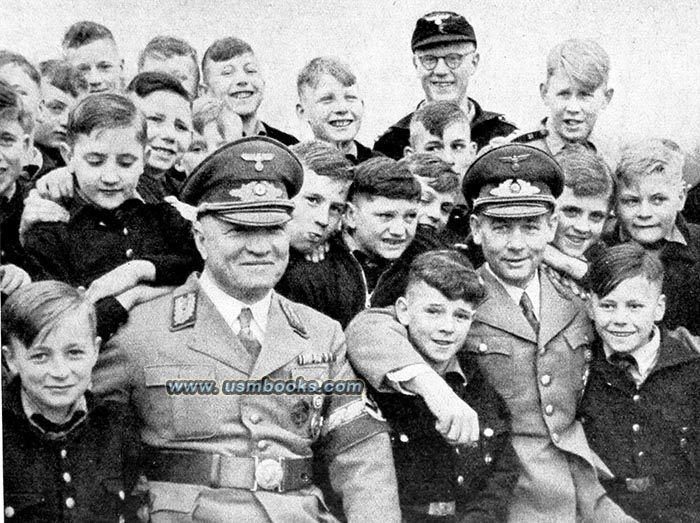 |
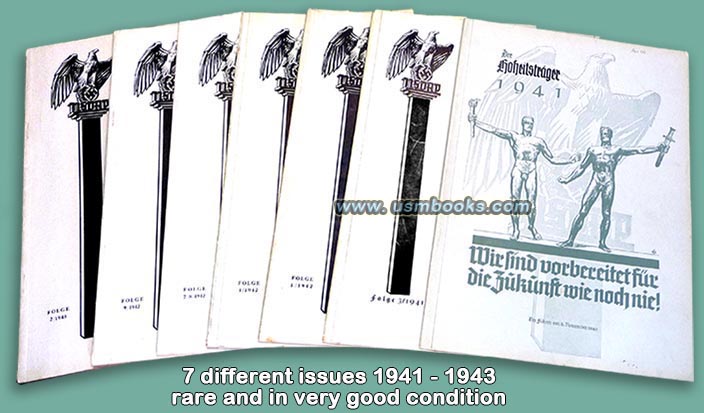 |
Above, pictures from an educational Hitler Youth propaganda film.
Left, a very rare picture of a 'mailbox' set up by the NSV department of the NSDAP Leadership of District Gleiwitz where citizens could drop off used books, newspapers and magazines to be distributed to wounded soldiers.
Left, a very rare picture of a 'mailbox' set up by the NSV department of the NSDAP Leadership of District Gleiwitz where citizens could drop off used books, newspapers and magazines to be distributed to wounded soldiers.
Shown left is a photo that accompanies an article about the ethnic German population of Ukraine.
Below are very rare pictures from Der Hoheitsträger 1942 / Folge 9 that show Reichsleiter Alfred Rosenberg and Gauleiter Erich Koch (Reichskommissar für die Ukraine) during their visit to Chortitza, Ukraine.
These rare magazines also have an article about the Nazi Party administrative plans for Poland and Ukraine in the German Occupied East.
Below are very rare pictures from Der Hoheitsträger 1942 / Folge 9 that show Reichsleiter Alfred Rosenberg and Gauleiter Erich Koch (Reichskommissar für die Ukraine) during their visit to Chortitza, Ukraine.
These rare magazines also have an article about the Nazi Party administrative plans for Poland and Ukraine in the German Occupied East.
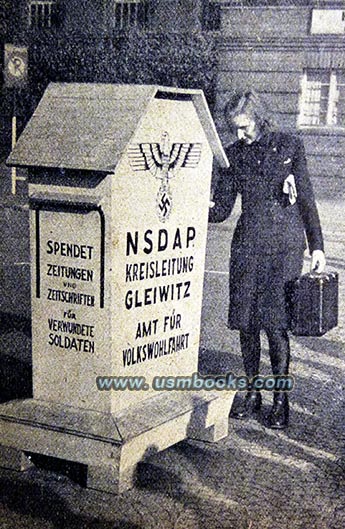
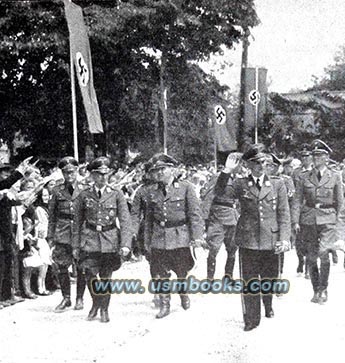 |
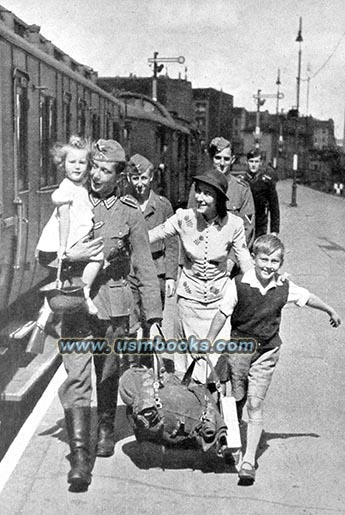 |
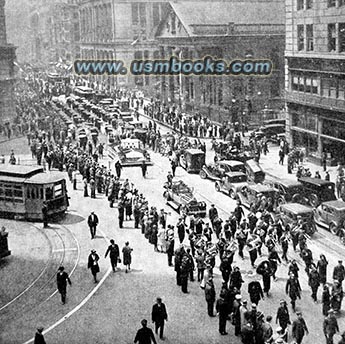 |
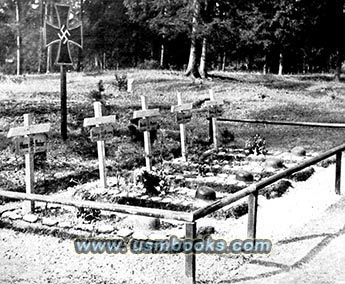 |
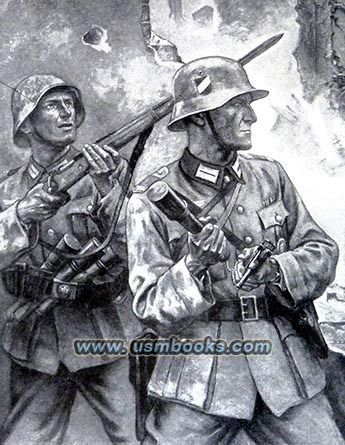
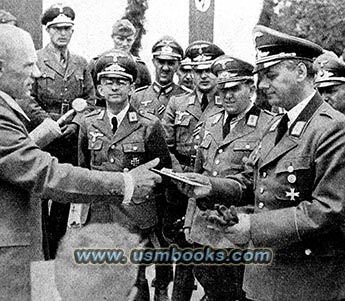 |
| There are pictures and illustrations accompanying the articles of memorial services for fallen members of the Wehrmacht, Danzig Gauleiter Forster at the graves of ethnic German victims of the Bromberg massacre of September 1939, NS-Frauenschaft and DRK members helping wounded Wehrmacht soldiers, handicraft and art made by ethnic Germans in Norway, NSDAP Gauleiter Fritz Wächtler with BdM girls, Nazi Party officials with KLV boys, proper house decorations, Nazi war art, Dr. Ley and Albert Speer mingling with German factory workers, Nazi soldiers on leave (shown left), suitable and unsuitable pictures for Nazi Party education, Arno Breker’s heroic statue Bereitschaft, Benito Mussolini and Adolf Hitler, Alfred Rosenberg and Gauleiter Koch with ethnic Germans in the Ukraine, a painting of Adolf Hitler at the House of German Art in Munich, and many more. |
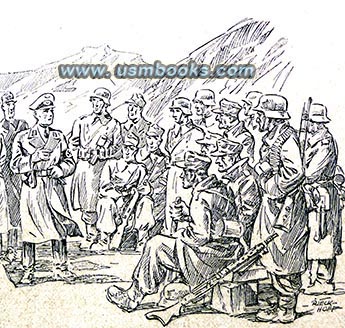 |
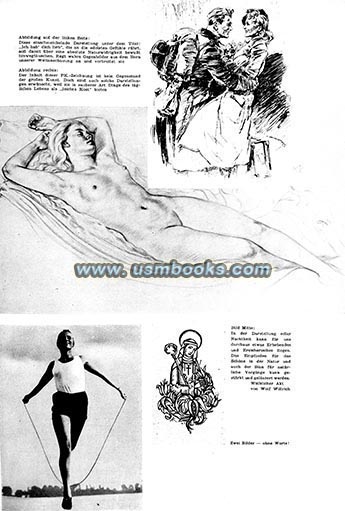 |
for Nazi Party education purposes. |
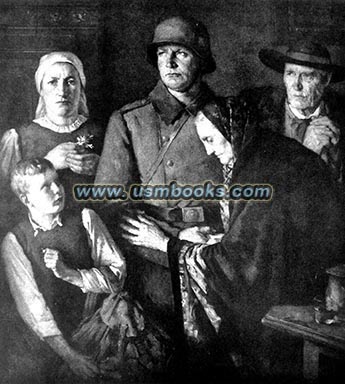 |
at the House of German Art in Munich, and in these issues of Der Hoheitsträger. |
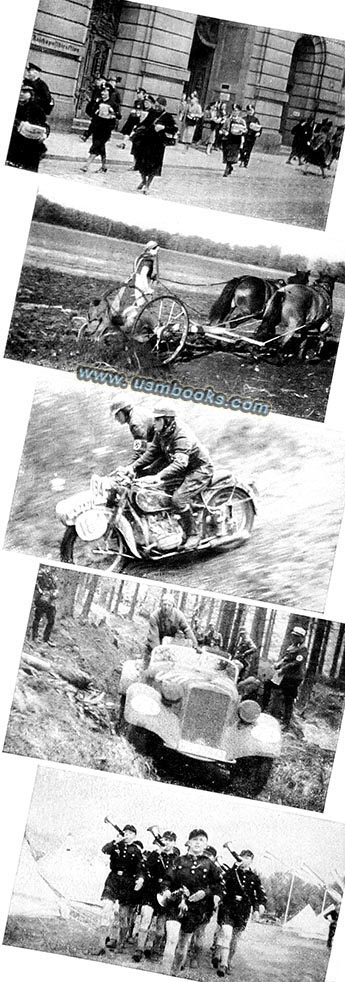 |
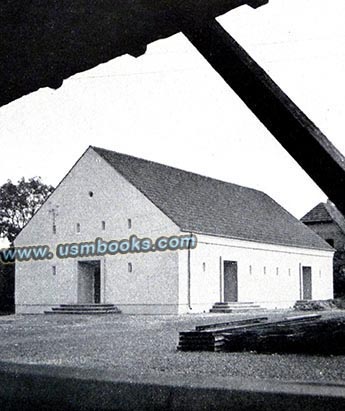 |
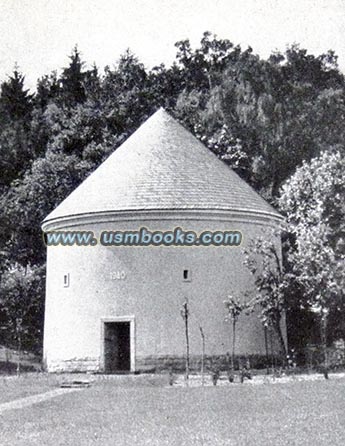 |
| The March 1941 magazine has a very interesting article by Otto Schneider who was in charge of exhibitions for Reichsleiter Alfred Rosenberg. Schneider’s chapter covers new, more effective exhibition techniques and is accompanied by color pages with examples. |
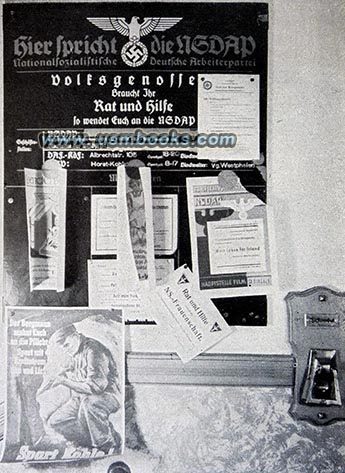
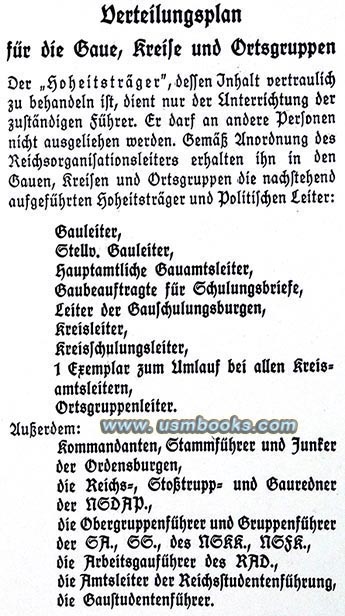 |
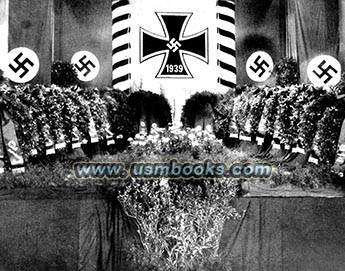 |
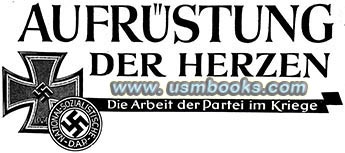 |
The seven issues of Der Hoheitsträger
|
| January/February 1941 (Folge 1/2), March 1941 (Folge 3), January 1942 (Folge 1), April 1942 (Folge 4), July/August 1942 (Folge 7/8), September 1942 (Folge 9) and February 1943 (Folge 2). |
| The combined January/February 1941 issue (shown right) is an example of Der Hoheitsträger that most collectors have never seen. It has a special, very striking cover with a quote from Hitler: “We are prepared for the future like never before!”. The white front covers on the other issues have the standard Hoheitsträger design of an eagle and swastika at the top of a column, the date, and the words Der Hoheitsträger on them in black. |
 |
 |
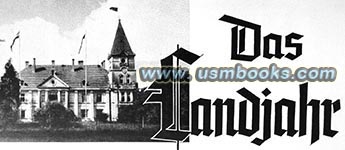 |
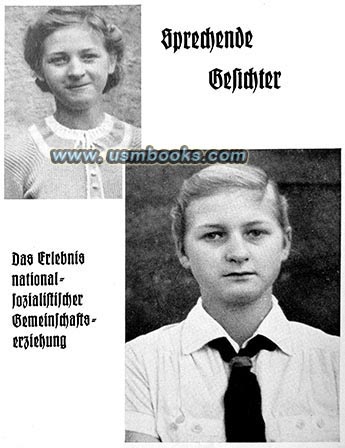 |
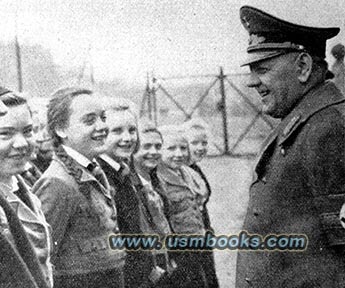 |
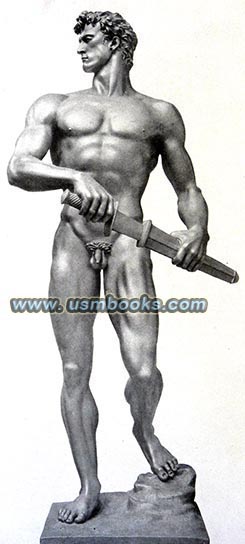
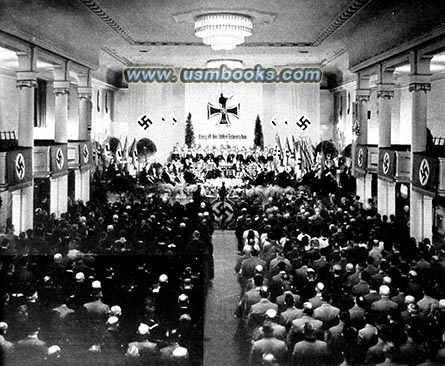
After decades in an archive in the High Plains Desert climate of the Black Hills in western South Dakota, these carefully stored 80+ year old magazines are perfectly dry and have no offensive odor. They are in very good condition.
Please note that the April 1942 issue has a replaced back cover, a very professional replacement of the original.
Please note that the April 1942 issue has a replaced back cover, a very professional replacement of the original.
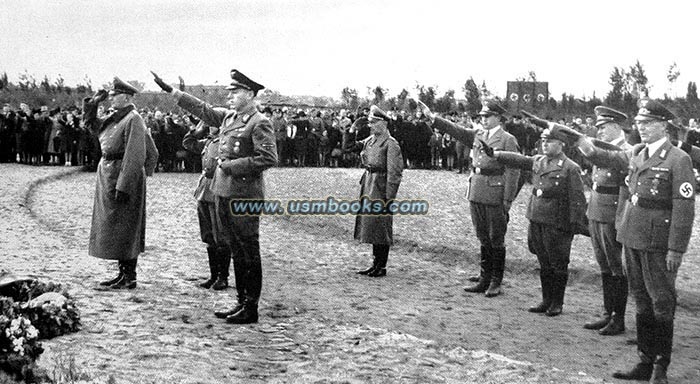
The very hard-core and controversial Nazi content of these Hoheitsträger magazines is the reason that most examples were sought out and destroyed at the end of the Third Reich and World War II by Allied denazification personnel. Their controversial content was also used by the prosecution in their effort to convict Dr. Robert Ley and others at the International War Crimes Trials in Nürnberg.
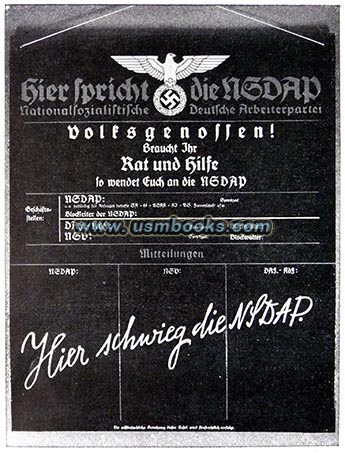
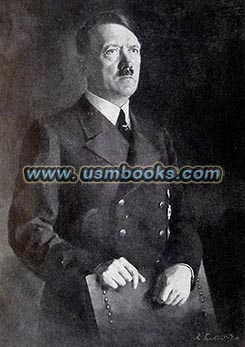
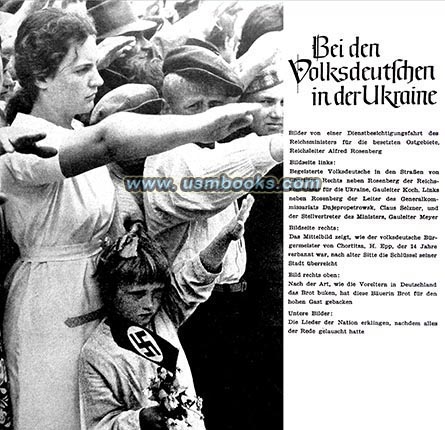
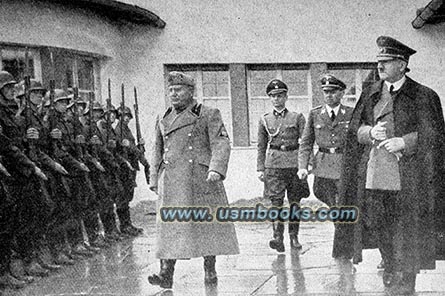
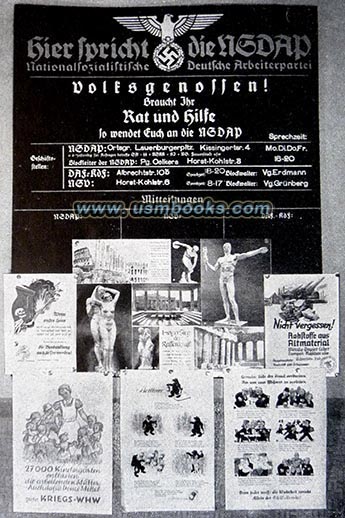
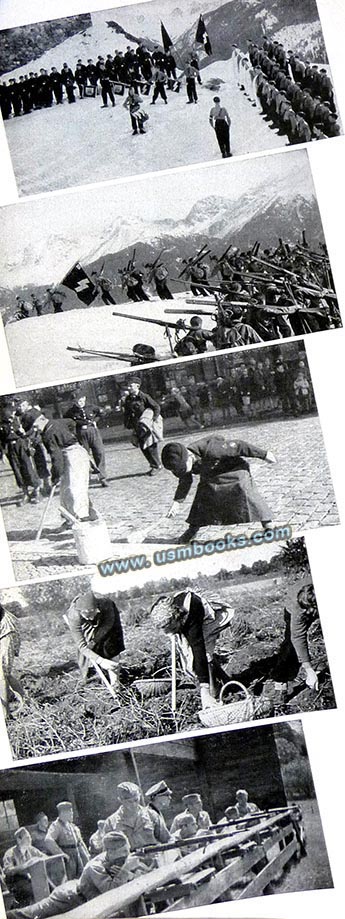 |
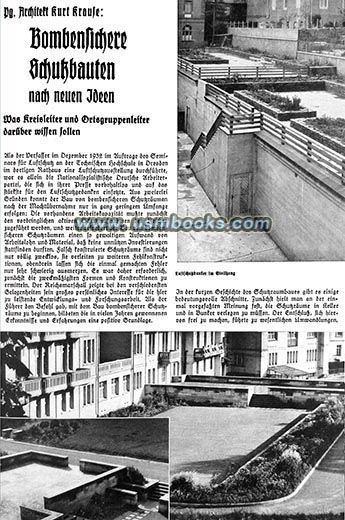 |
article by Dr. Architekt Kurt Krause on the new way of building air-raid shelters in Nazi Germany. |
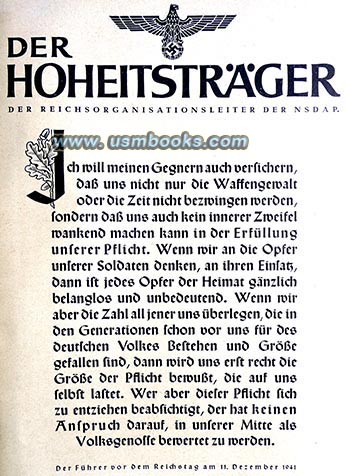 |
Shown right is a rare color feature from Der Hoheitsträger 1943 Folge 2. The red part of the illustration shows the 25 fundamental points that make up the 'program' of the Nazi Party. It is part of an article that Nazi Party leadership could use to teach these principles to future generations of NSDAP leaders.
Each issue also contains letters from Kreisleiter and Ortsgruppenleiter to the editor of Der Hoheitsträger, technical and organizational news, reviews of new books, Hitler quotes and patriotic song lyrics suitable for educational use.
Each issue also contains letters from Kreisleiter and Ortsgruppenleiter to the editor of Der Hoheitsträger, technical and organizational news, reviews of new books, Hitler quotes and patriotic song lyrics suitable for educational use.
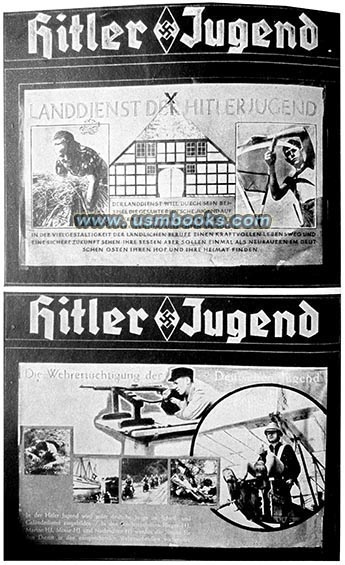
Also for sale on USMBOOKS.com, original 1939 issues of Der Hoheitsträger and rare Third Reich 'binders' for 1937/38 and 1939 Hoheitsträger magazines. We are happy to combine shipping of multiple purchases!
| •Add $14.95 for Priority Mail shipping with online tracking OR $7.95 for Media Mail. |
| • IF you wish to purchase highly recommended, but optional insurance, add $7.75. |
| • We will be happy to ship abroad at additional cost, however foreign customers are responsible for any VAT payments, import duties & customs clearing fees. Please inquire. Sorry, but we can not ship these magazines to EU countries. |
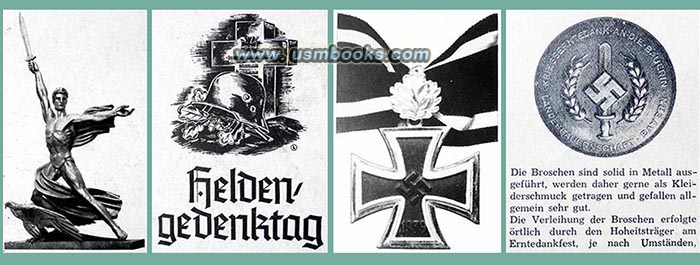
| There was no more important magazine circulated in Nazi Germany than Der Hoheitsträger (The Standard Bearers). It was published during the Third Reich for distribution to Gauleiters, Kreisleiters and other high officials of the Nazi Party and its paramilitary organizations such as Generals of the SS, SA, NSFK, NSKK, etc. It was circulated to the Commandant and a select group of Officers at each of the Ordensburgen and to the highest ranking people in the Hitler Youth, Reichsarbeitsdienst, Deutsche Arbeitsfront, etc. - people responsible for the entire “political appearance of the Nazi Movement” within their zone (Gau, Kreis, Ortsgruppe, etc.). People representing the Nazi Party at institutions that were responsible for setting the right example and behavior, maintaining discipline and order, as well as supervising all members in their sphere of responsibility. See list show left. |
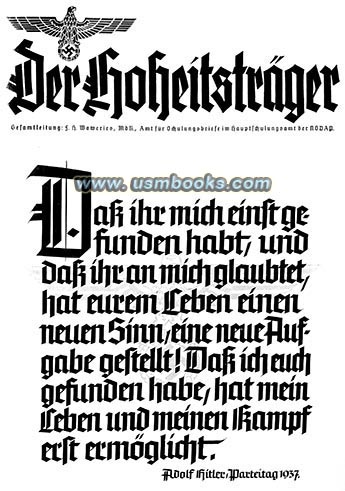 |
| The organizational genius of the Nazi Party, Reichsorganisationsleiter Dr. Robert Ley was in charge of Der Hoheitsträger, its contents and its distribution (the magazine was published only for the orientation of the most competent, high-ranking party leaders and copies were not be loaned out to other persons). Each of the magazines in this lot has the word Vertraulich or Confidential printed at the bottom of most of the pages! So limited was the circulation of this heavily illustrated 9 x 12-5/8 inch heavily illustrated Nazi Party magazine that on every issue there was a serial number printed across a pad of lines on the back cover, and printed in German across the bottom of the front cover of each issue was a statement that translates “Only For Service Use - Confidential”. Each issue contained very sensitive information about how to make the Nazi Party look better to the press and public, Nazi ceremonies, Nazi organization and education, book reviews and even a critique of the Nazi Party members themselves. |
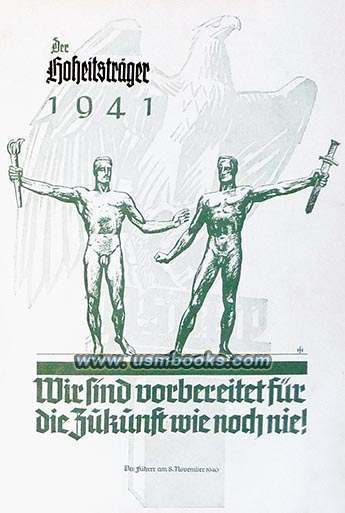 |
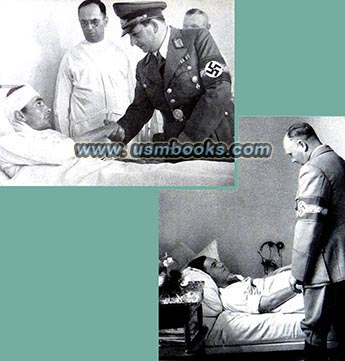 |
| One of these World War II era magazines has a chapter by Dr. Robert Ley about Socialism and Military Service, and other articles cover the Work of the Nazi Party during War (which included dealing with POWs, Allied bombing victims, families of fallen soldiers, etc.), Nazi Party members who died or were wounded during service for the Fatherland, the Obligatory Service Year on the Farm for German Girls (Das Landjahr), Care and Support for Wounded Soldiers, the Role of Volksdeutschen or ethnic Germans in Nazi Party Ortsgruppen, air raid shelters, Racial Chaos and Revenue Loss, Kinderland-Verschickung (the World War II Nazi program (similar to those in Britain) that evacuated German children from big cities to the countryside for safety and health reasons), the NSV, questionable advertising on the walls of homes, Nazi Party Cultural Films, Criminal Law for Young Offenders, Population Management in the USA and in Japan, the Role of German Women in the Party, Everyday Life during Wartime, Care for the Family of Fallen Soldiers, the Ethnic German Population of Ukraine, Political Education for Wehrmacht Soldiers, the Use of Foreign Labor, Nazi Party Administrative Plans for Poland and Ukraine in the Occupied East, the proper educational use of Nazi Party Announcement Boards, etc., etc. |
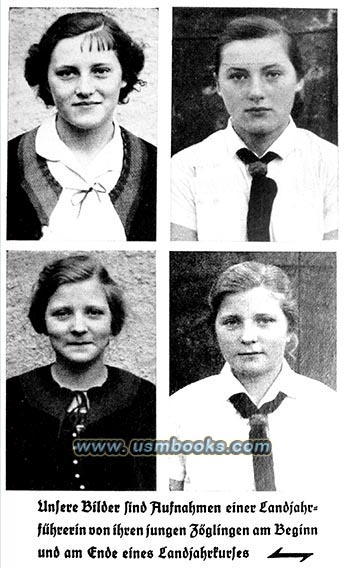 |
victims of the Bromberg massacre of September 1939. |


